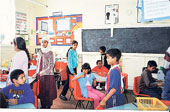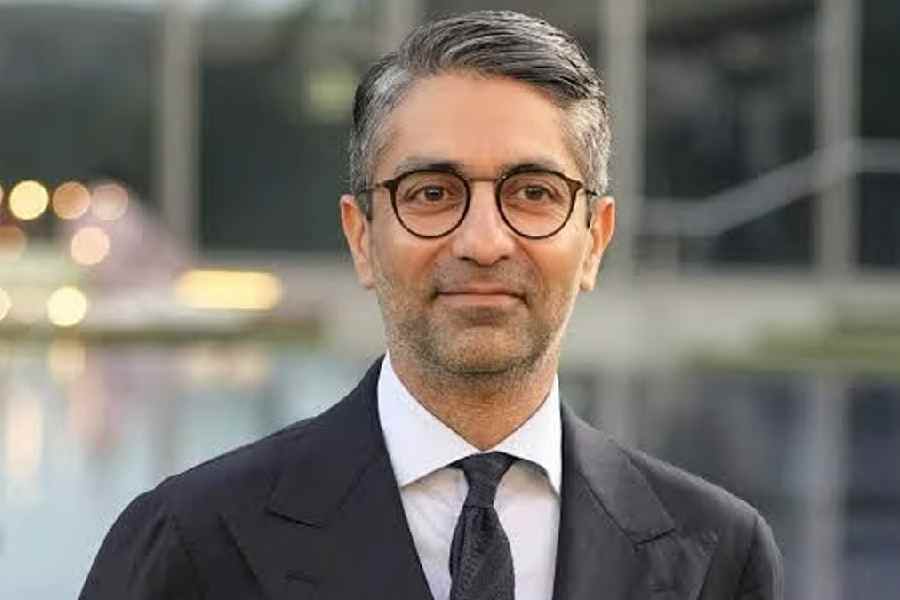 |
Multiple disabilities among children are a big barrier in the path of inclusion within mainstream society. We normally tend to look at what they cannot do because of their disabilities without seeing what they can do despite the handicap. Therefore, only a conscious effort can open doors for these children. In our inclusion blueprint, if we can solve two questions – what and how – then the task will become easier.
Let us take a look at a typical child labelled “not normal”. Parents shut the door to the outside world to stop their children from being stigmatised as disabled by a callous society. Thus no census can give the accurate number of disabled people in our country.
December 3 is World Disabled Day and April 2, World Autism Day. So, finally some recognition has come the way of the autistic population. It no longer comes under the umbrella category of mental retardation.
We cry hoarse that we want inclusion. The law is already there: the right to education for three per cent children with special needs. A reputed inclusive school in south Calcutta and the first of its kind in eastern India is going to complete its 10th anniversary soon. But in these 10 years not a single school has come forward to declare under the inclusion banner:
“Here I am to address your needs, to embrace you with opportunities and to treat you with sensitivity”.
No, the door is still tightly shut.Who are those that we call children with special needs or “disabled”? Let’s take a look.
![]() There goes a little girl, straight silky hair, slanted eyes, round face and blunt nose. She is always alert to absorb as much information as she can from her environment. Maybe the child has Down’s Syndrome.
There goes a little girl, straight silky hair, slanted eyes, round face and blunt nose. She is always alert to absorb as much information as she can from her environment. Maybe the child has Down’s Syndrome.
![]() Oh not again, the mother (obviously she is the mother, who else could she be) cajoling her 10-year-old to school, a special school because the boy seems autistic, though he looks all right from a distance. She is waiting for a bus to take the child to school and then to enjoy some respite!
Oh not again, the mother (obviously she is the mother, who else could she be) cajoling her 10-year-old to school, a special school because the boy seems autistic, though he looks all right from a distance. She is waiting for a bus to take the child to school and then to enjoy some respite!
![]() A young adult with a crutch making his way through the crowd, heading for his special school.
A young adult with a crutch making his way through the crowd, heading for his special school.
![]() Escorted by a maid, schoolbag on his back, smartly dressed, dragging his plastic water bottle along the footpath, oblivious to the sound it makes or the glances from passersby, this boy has a label too: Attention Deficit Hyper Active or ADHD.
Escorted by a maid, schoolbag on his back, smartly dressed, dragging his plastic water bottle along the footpath, oblivious to the sound it makes or the glances from passersby, this boy has a label too: Attention Deficit Hyper Active or ADHD.
Thanks to Taare Zameen Par, we at least have an idea about cases of dyslexia where a child has a reversal problem. This makes him write the word “dog” as “bog” or “light” as “lite”. We fail to see the underlying cause of the problem, why the child is lost in the maze of words, writing “xof” and “nus”! For him there is no roadsign to follow. So the boy sinks and swims like Ishan in TZP.
Can we not open the shut door? One school in Calcutta cannot cope, but it still tries to accommodate as many as possible. There are many success stories on inclusion. The concept has been there in the developed world for more than a decade and schools have been providing opportunities for children with different needs, recognising them and throwing the door open.
Shout out loud
What’s on your mind this week
Changing face of Bollywood
A few years ago, I had gone to a cinema to watch Kabhi Alvida Naa Kehna (KANK). Finding the show running to a full house, I settled for Scorcese’s The Departed.
I eventually watched KANK too, and found the difference between the two films striking. KANK’s characters hammed it up, with songs and loud dialogue, mauling a sensitive issue. But The Departed did not trivialise its central concern about identity and redemption. Do directors in India make movies only to attract the masses, regardless of quality? Of late, several films have targeted niche urban audiences — made possible greatly by the growing number of multiplexes. Black was one such film, followed by Rang De Basanti, Lage Raho Munnabhai, Omkara and Khosla ka Ghosla. All these films provide food for thought. New ideas have become viable as corporate enterprises foray into films and target niche audiences. Can Bollywood aspire to equal Hollywood standards? Some years down the line, yes. Till then a lot of learning has to be done.
Pooja Ghosh Dastidar,
Heritage Institute of Technology










